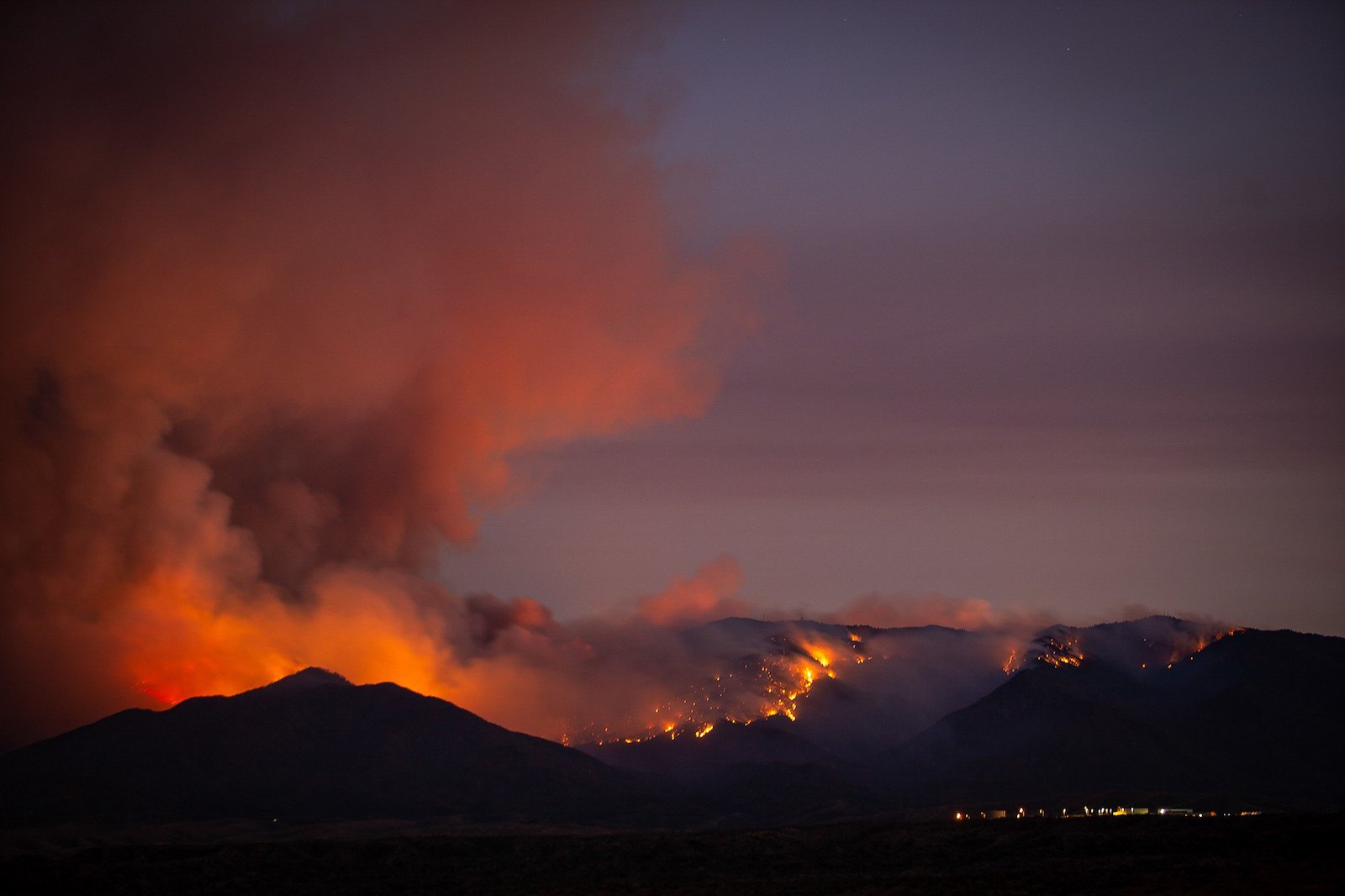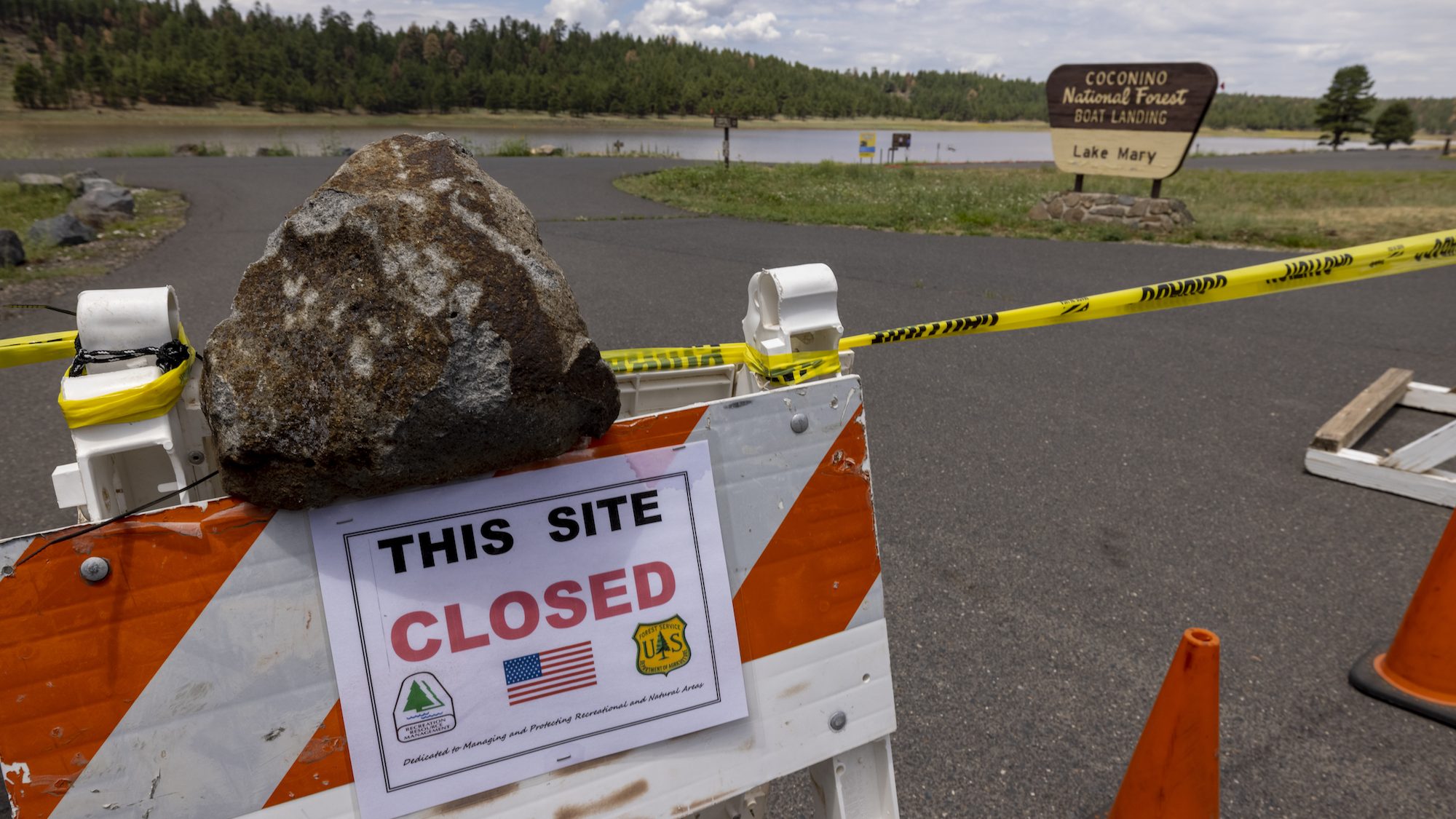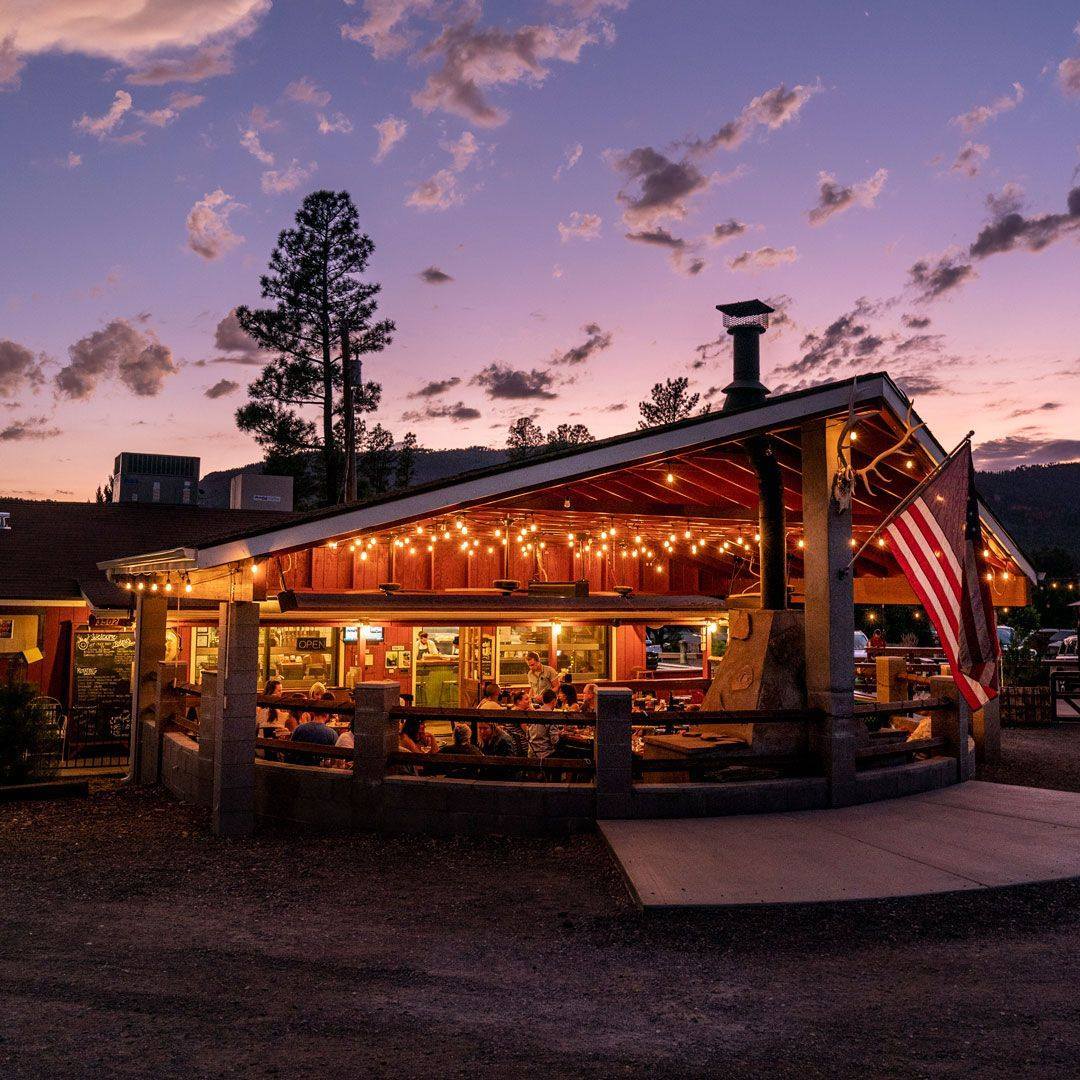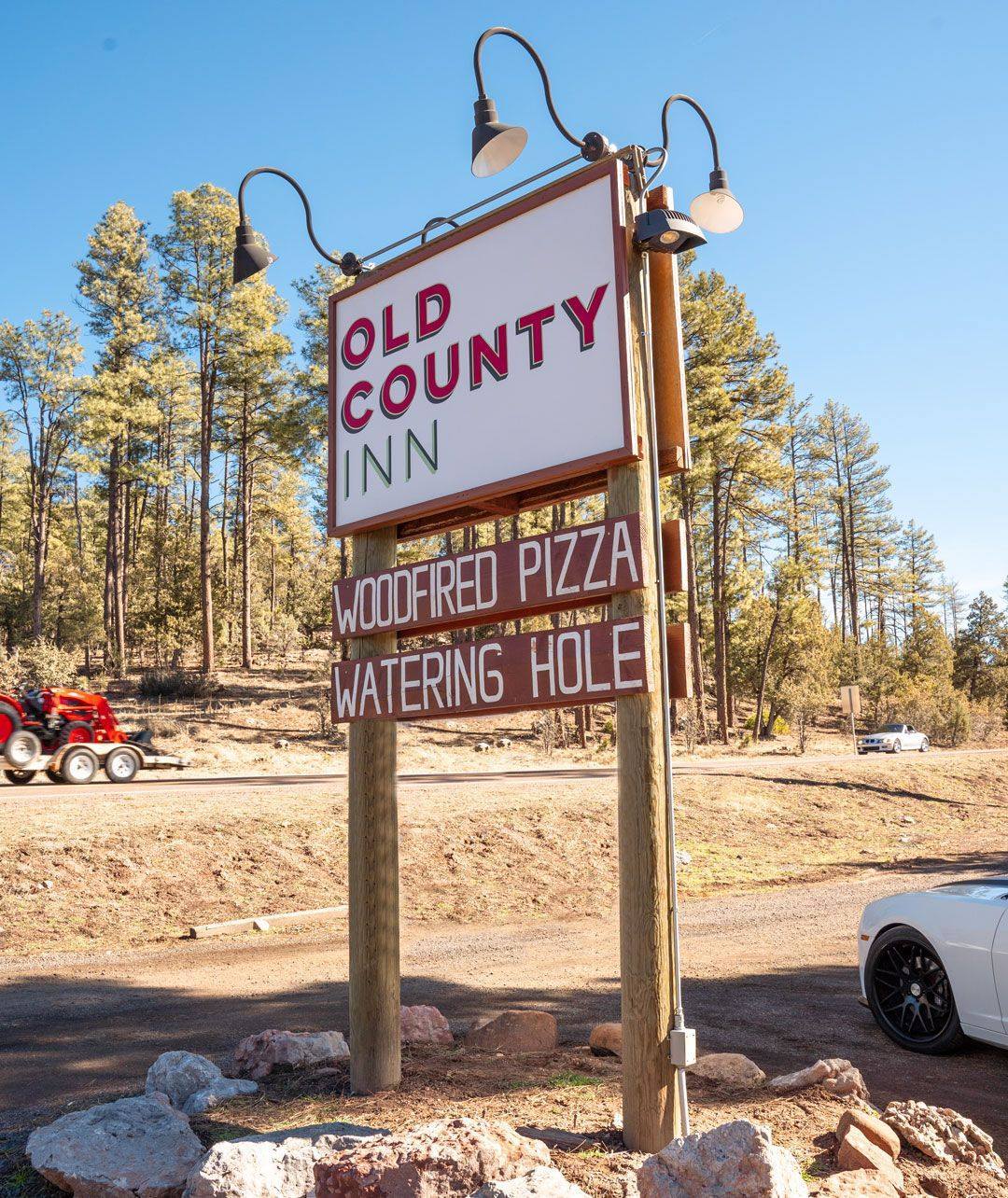Back in 2016, Michael Dahling did something crazy: He left a steady job and maxed out his credit cards to open Old County Inn, a restaurant in the tiny town of Pine, Arizona. Restaurants are always risky no matter where they’re located, but Pine is surrounded by the Tonto National Forest. In a good year, that means a steady stream of mountain hikers stopping in for a pizza, and cyclists telling jokes over rounds of beers. But last month, officials temporarily closed the national forest entirely due to drought and the threat of fire.
“Obviously Arizona gets dry, and you can definitely tell it’s getting drier. It seems like now every year they shut down the forest around Memorial Day,” Dahling said.
Michael Dahling owns Old Country Inn, seen here from the outside, near the Tonto National Forest. He says the dangerously dry vegetation has been challenging for business. Images courtesy of Old Country Inn.
As the Southwestern corner of the country baked to a crisp and fires began to flare in late June, officials also closed the Prescott, Kaibab, Apache-Sitgreaves, and Coconino national forests — all in Arizona. It is likely the largest number of simultaneous closures in Forest Service history. Forests have shut down in response to fire risk before, of course, but not all at once like this, Punky Moore, a fire communications specialist for the Forest Service’s southwestern region, told Grist.
These closures come just as businesses are trying to recover from COVID-19 losses, and when many people are desperate to get out to public lands for pandemic-safe activities and Instagrammable travel.
“The pent up demand is huge. I’ve never seen it like this before,” said Kevin Nissen, co-director of Friendly Pines Camp, which sits on private land in the middle of the Prescott National Forest “What you’ve got is parents who are really ready to get their kids outside and out from behind their screens, and campers who really want to get out of the house.”
The more people pour out of quarantine and into public lands, the more likely one of them is to accidentally spark a fire. And this year, the risk is perhaps higher than ever before.
All across the West, national forests and other public lands are dangerously dry. At the Forest Service’s Rocky Mountain Research Station, ecologist Matt Reeves runs the FuelCast model, which predicts the amounts of dry grass and brush on the non-wooded parts of the national forests. A few months ago, that model started spitting out numbers that made Reeves ask a programmer to check the model’s computer code for errors. “I called him up and said, ‘We’ve got a problem here,’” Reeves said. “‘Either there’s a hiccup in the data, or the algorithm blew up, or we are headed for uncharted territory.’”
There was nothing wrong with the model. The predictions were right. It is the extent of this dryness that makes it so unusual. Just about every prairie, desert, and shrubland in the western half of the United States is parched. There have been more intense droughts in the recent past, but they’ve been smaller, Reeves said. The fact that a model based on machine learning confidently predicted something that to human eyes looked like a mistake is evidence that the predictable order of things no longer applies. “The baselines are changing,” Reeves said. “That makes the systems too complicated for human beings, so we need to allow the computer to read the patterns.”
This year, heat waves have hit the Southwest particularly hard — 2021 had the hottest June on record in Arizona and seven other states. The heat turned vegetation to tinder leading to more extensive fires than the same time last year — which was one of the most severe in Arizona’s recent history.

It was this intense dryness and fire risk that led Forest Service officials to make the difficult decision to close most of Arizona’s national forests completely — leaving many tourism and outdoors-based businesses wondering how they would cope. But in the end, the closures didn’t stop many tourists from rushing to these businesses. Soul Ride, a mountain bike shop and outfitting company in Prescott, lost business it would have done providing tours and shuttles on the area’s well-known trails. But money from sales, repairs, and beer — the business has craft brews on tap — made up for that lost revenue, said Cina Mcconaughy, co-owner of Soul Ride. “In the end, it didn’t really affect our business. People were so eager to get out and ride that they found a way,” she said.
Friendly Pines Camp had to shift the routes of their hiking and horseback riding excursions, but said the closures didn’t hit their bottom line, thankfully.
As for Dahling, he said that even without the hikers and bikers, there are enough people willing to make the two-hour drive from Phoenix to the Old County Inn for the views and the wood-fired pizza. The stream of day-trippers was strong enough that he even did brisk business through the pandemic. But while the restaurant can survive the forest closures, fires are a different story.
On June 18th, Dahlin was on the restaurant’s deck going over the menu with an employee when he saw a pillar of smoke looming over the town. “I don’t know about you,” he remembers saying, “but I’m going to get out of here.” A few hours later the sheriff came in to confirm that evacuation was mandatory. It was a disaster: A wedding party had just arrived for their rehearsal dinner. “You can imagine — Friday night, there were 30 to 40 people here already, the bride and groom were crying,” Dahling said. They dropped everything and left. The fire spared Pine, but it was eight days before officials gave the all-clear for the evacuees to return.
The first rains of the summer monsoon season finally came to Arizona over the July 4th weekend, allowing the Tonto, Prescott, Kaibab, Apache-Sitgreaves, and Coconino national forests to partially reopen. But that doesn’t mean the threat has gone away. Many areas remain closed or restricted, and fires are still burning. More than 90 percent of the West is in a state of drought.
This may be a high-water mark for the appreciation of public lands. It also could be the summer that the public loves those lands to death.





